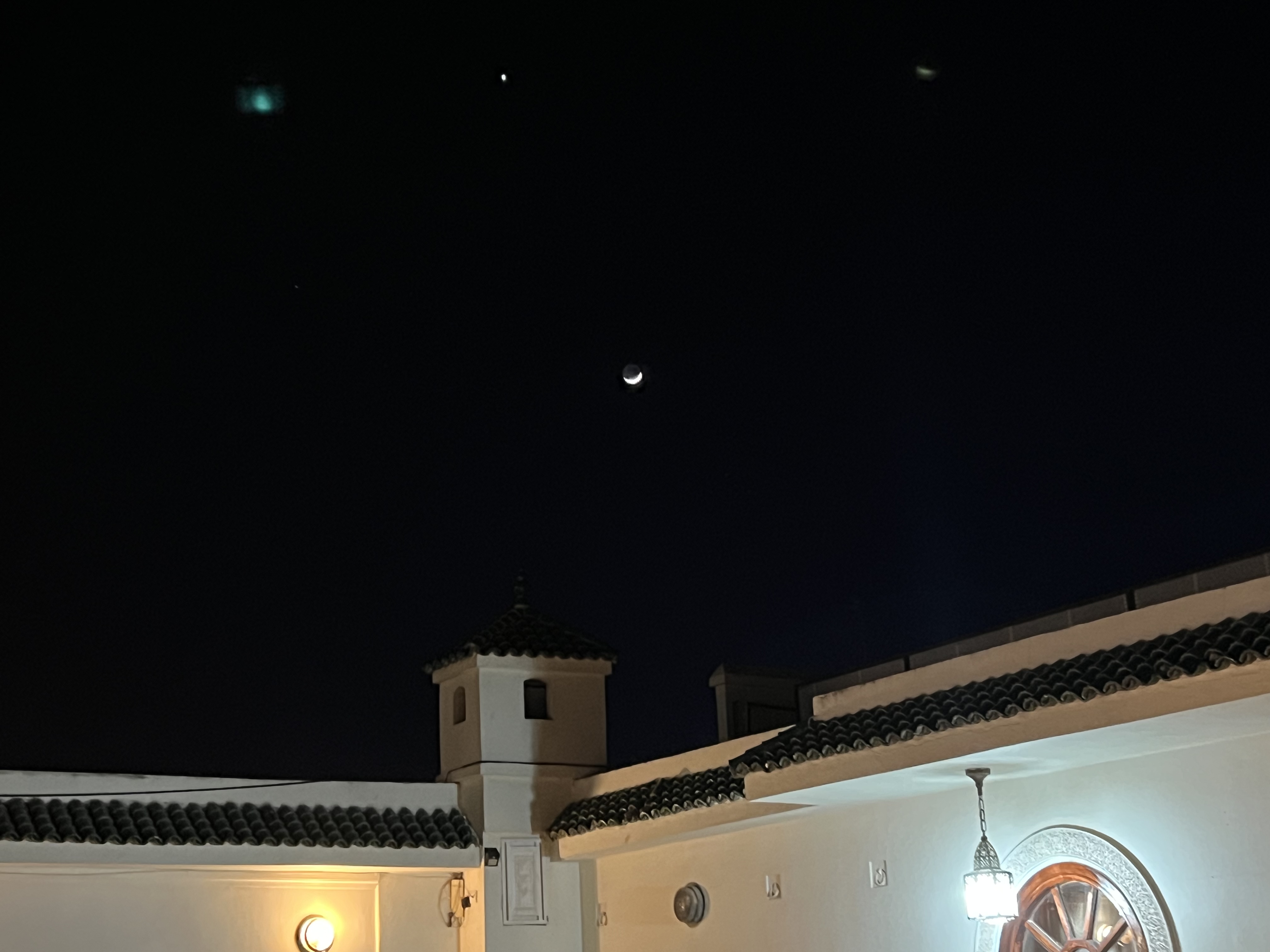We left Rabat and drove four hours to Fes. About an hour outside of Rabat we stopped to walk through a cork forest. These government-owned forests and the truffles found by the trees provide good income for the area residents.
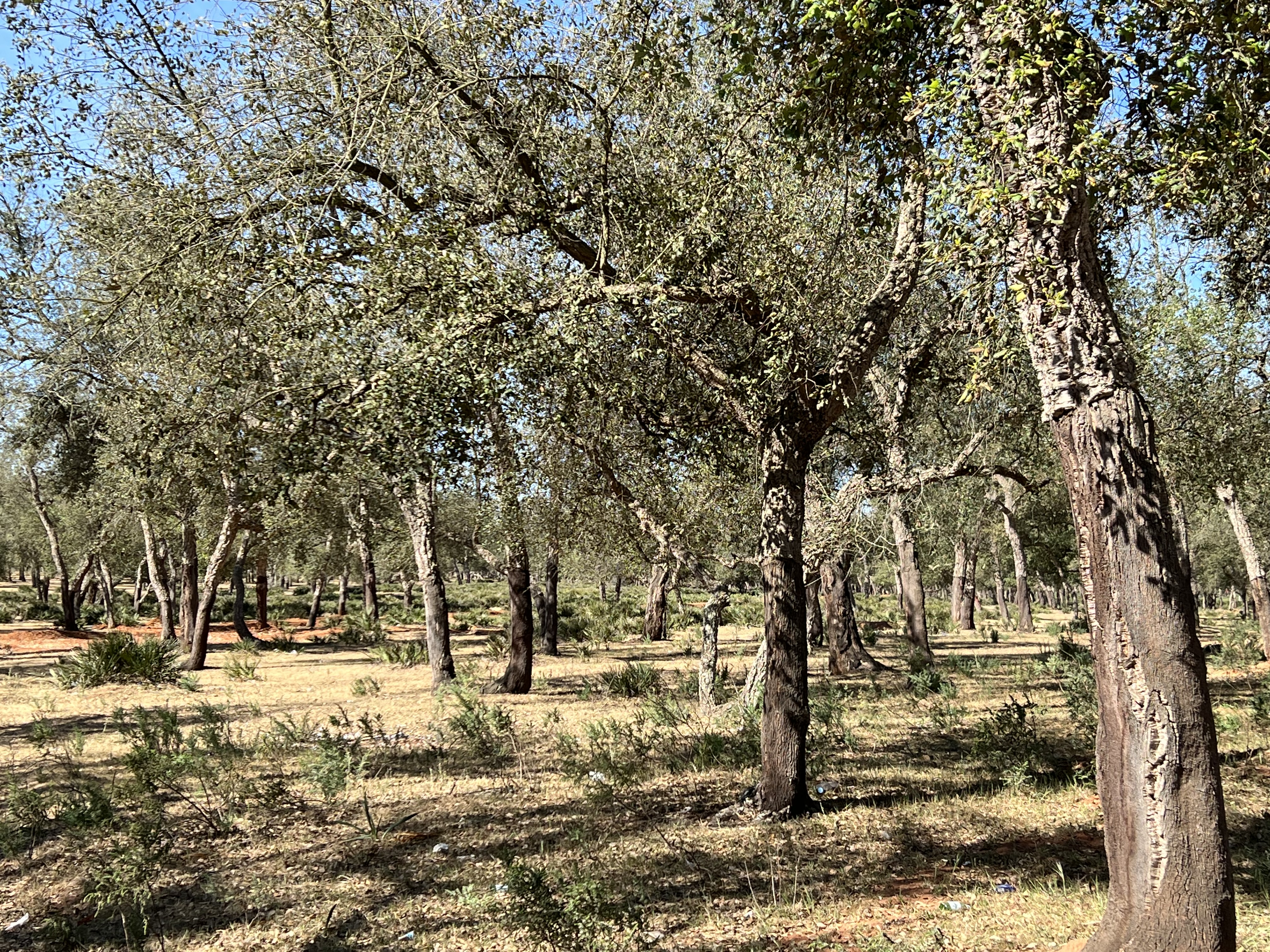
Khmiset
About an hour after visiting the cork forest, we stopped in the little village of Khmiset for a nos nos, the traditional half coffee, half milk Moroccan drink. I was afraid the drink would be too milky for me, but it was both delicious and beautiful.
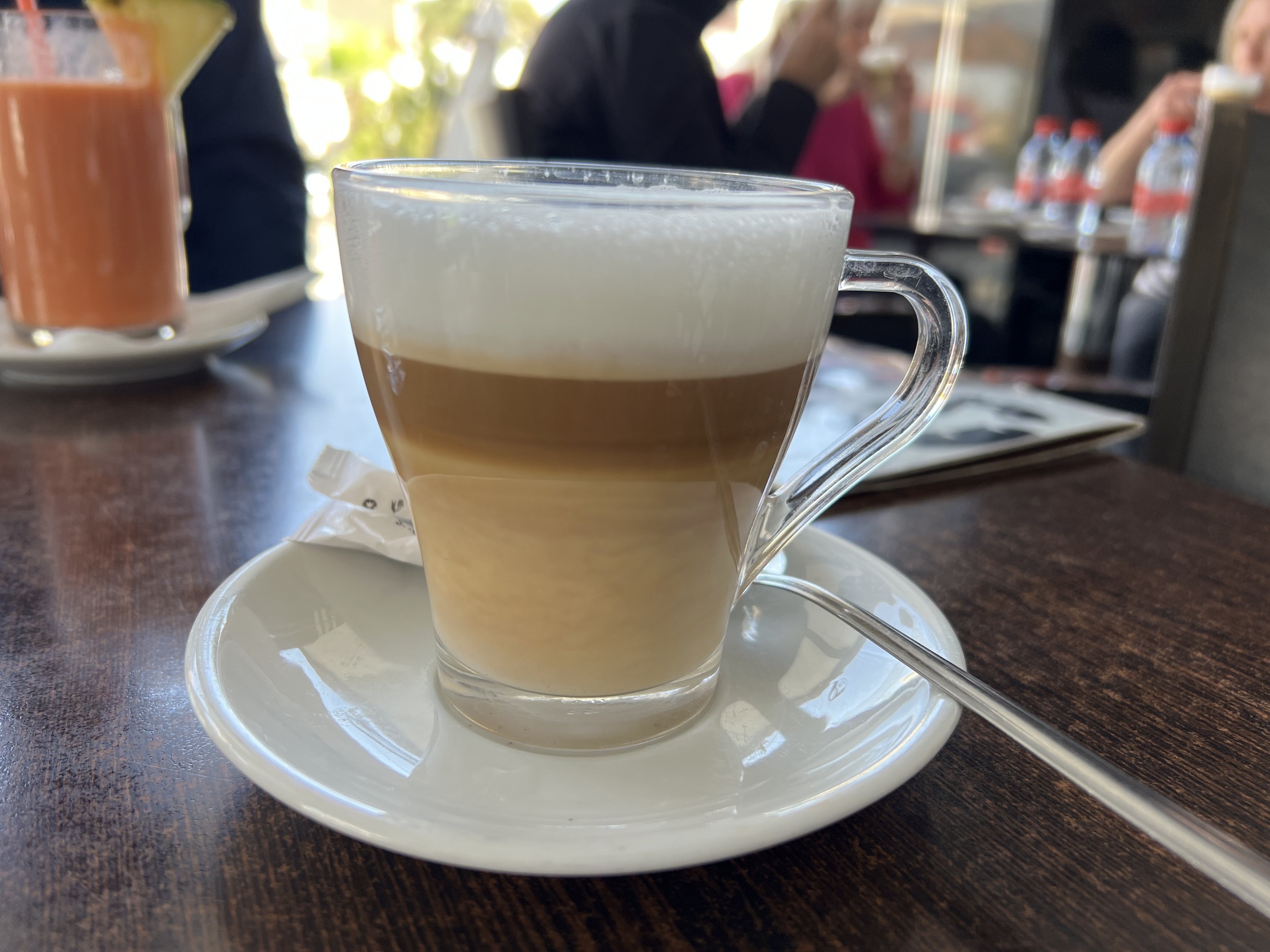
The shops in Khmiset were closed in observance of Eid al-Fitr, the celebration at the end of Ramadan. Morocco celebrated Eid al-Fitr later than many other countries because the moon-sighting committee in Morocco saw the crescent moon later than some other countries. We saw few people as we walked around the mostly deserted street.
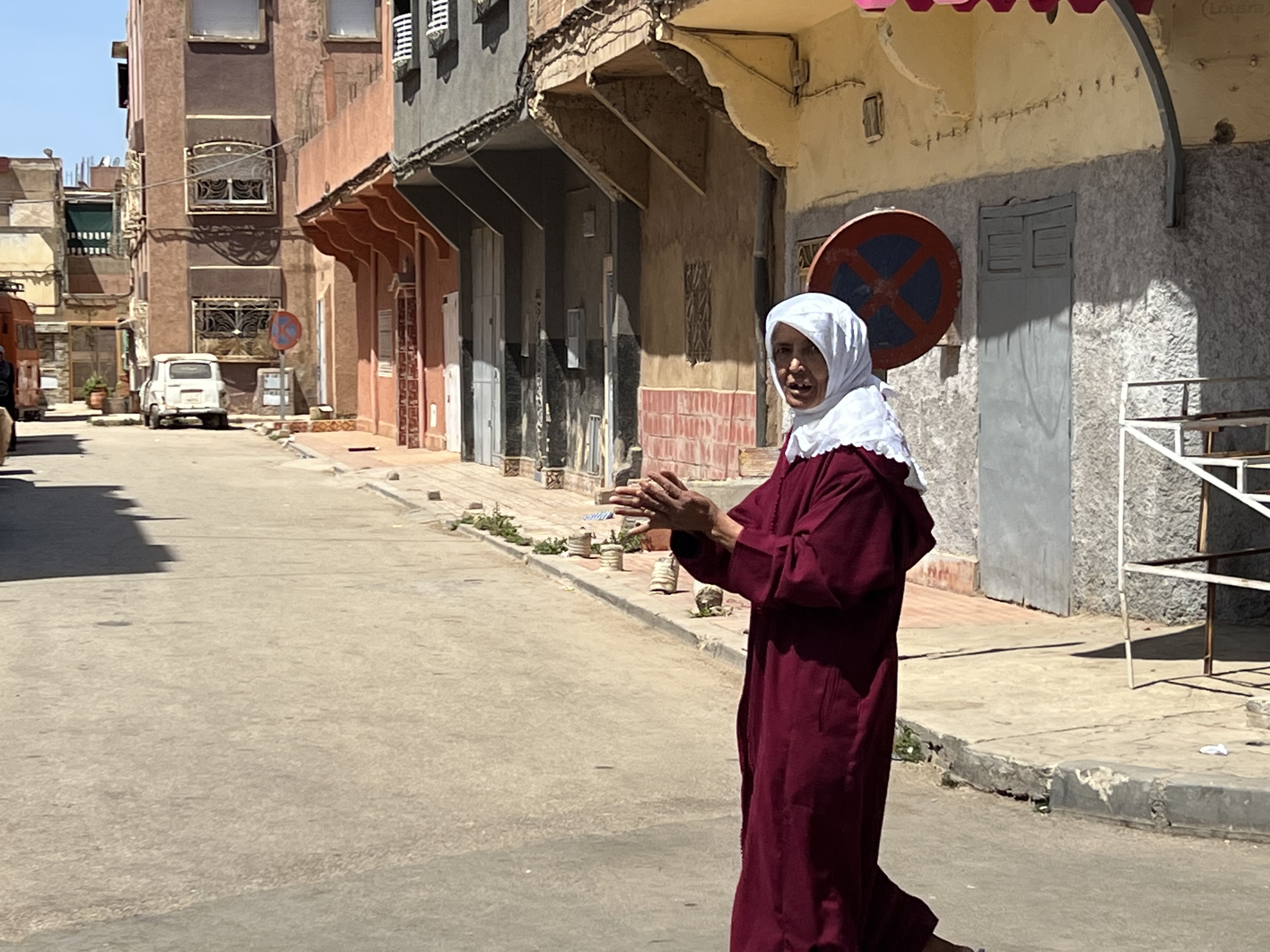
We did see quite a bit of activity around the cart of an enterprising young woman who sold bread she had made that morning. Abdou bought a loaf for us to try and it was delicious!
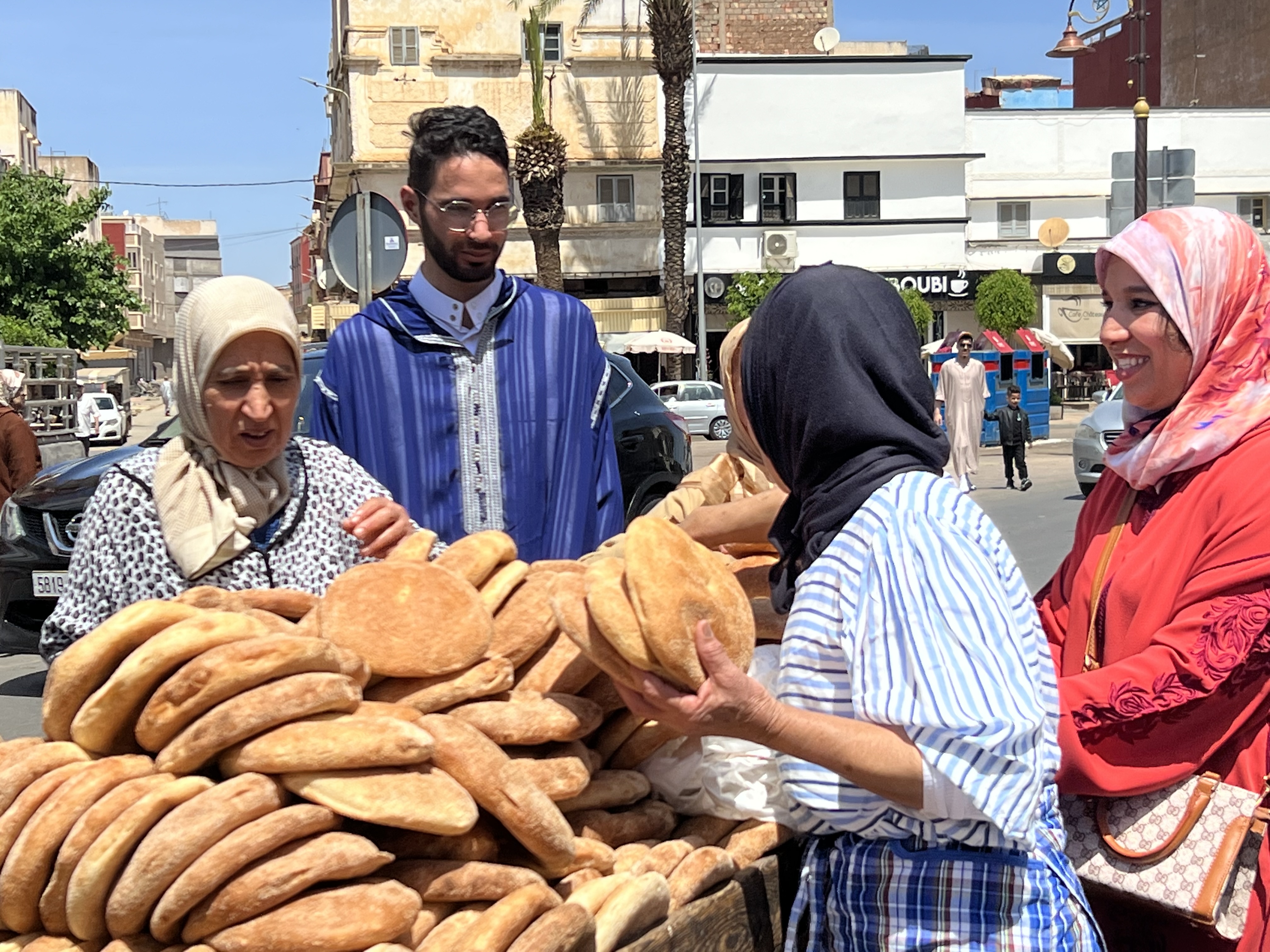
Our Home in Fes
We arrived in Fes, Morocco’s largest city in the early afternoon.
On our last night in Rabat, we dined in a riad and for the next three days, we get to live in one. Riad Authentic Palace is a 17th century building at the end of a narrow lane. So narrow that our bus had to drop us off and we walked about six blocks to the riad.
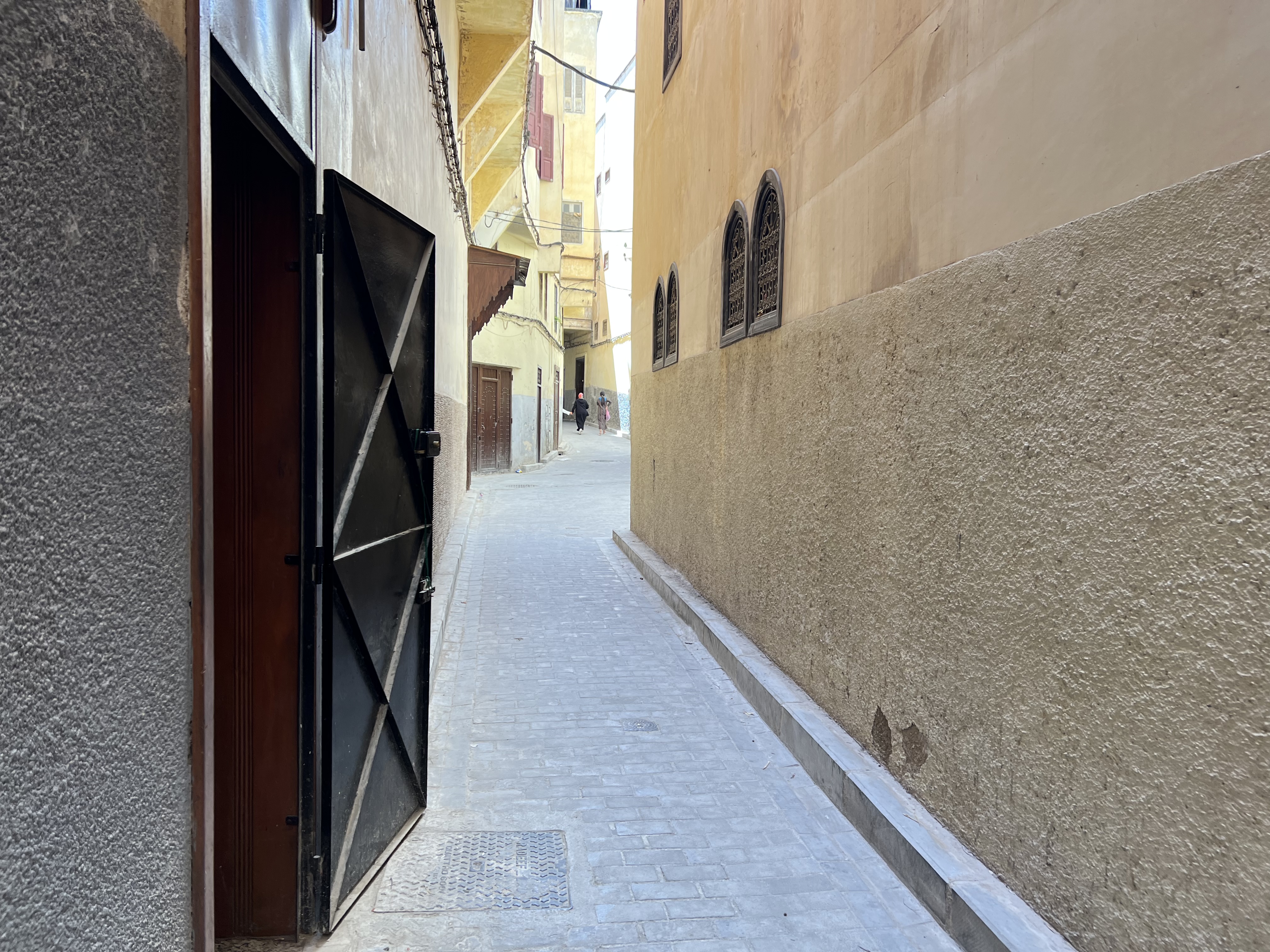
Riads are simple on the outside and lavish on the inside. Our riad’s beautiful lobby was a dramatic change from the simple exterior.
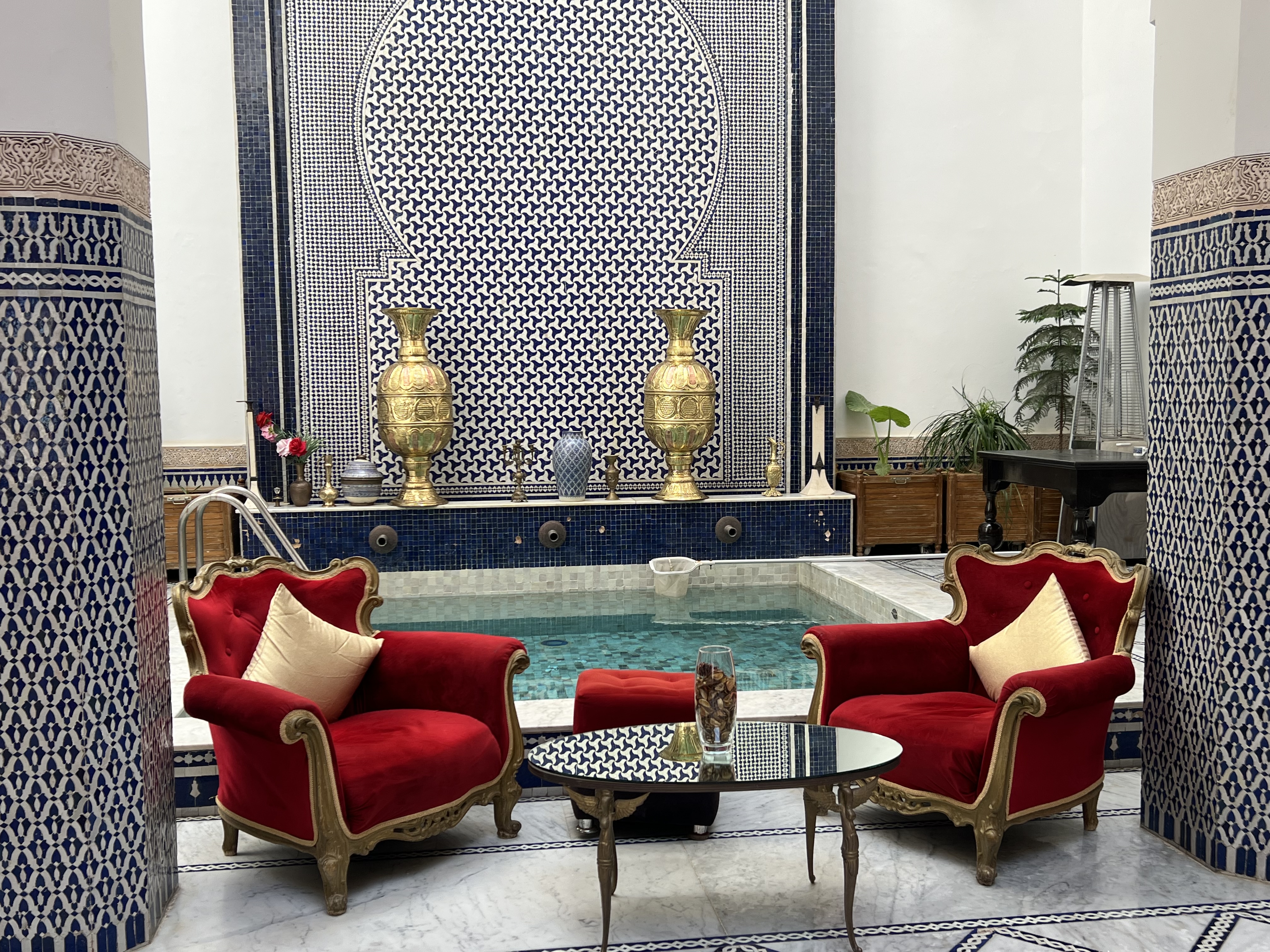
Fez Overview
After a tiny post-lunch rest, we met Abdou 2, our Fez guide and rode to a high point in Fez overlooking the city. We heard a call to prayer as we were looking out over the old part of the city.
We saw the Muslim cemetery on the right of the beautiful view. Earlier we had learned a little about Muslim burial practices. They use shrouds, not coffins, and bury their dead on their right side facing Mecca. All Muslims are buried because they do not believe in cremation.
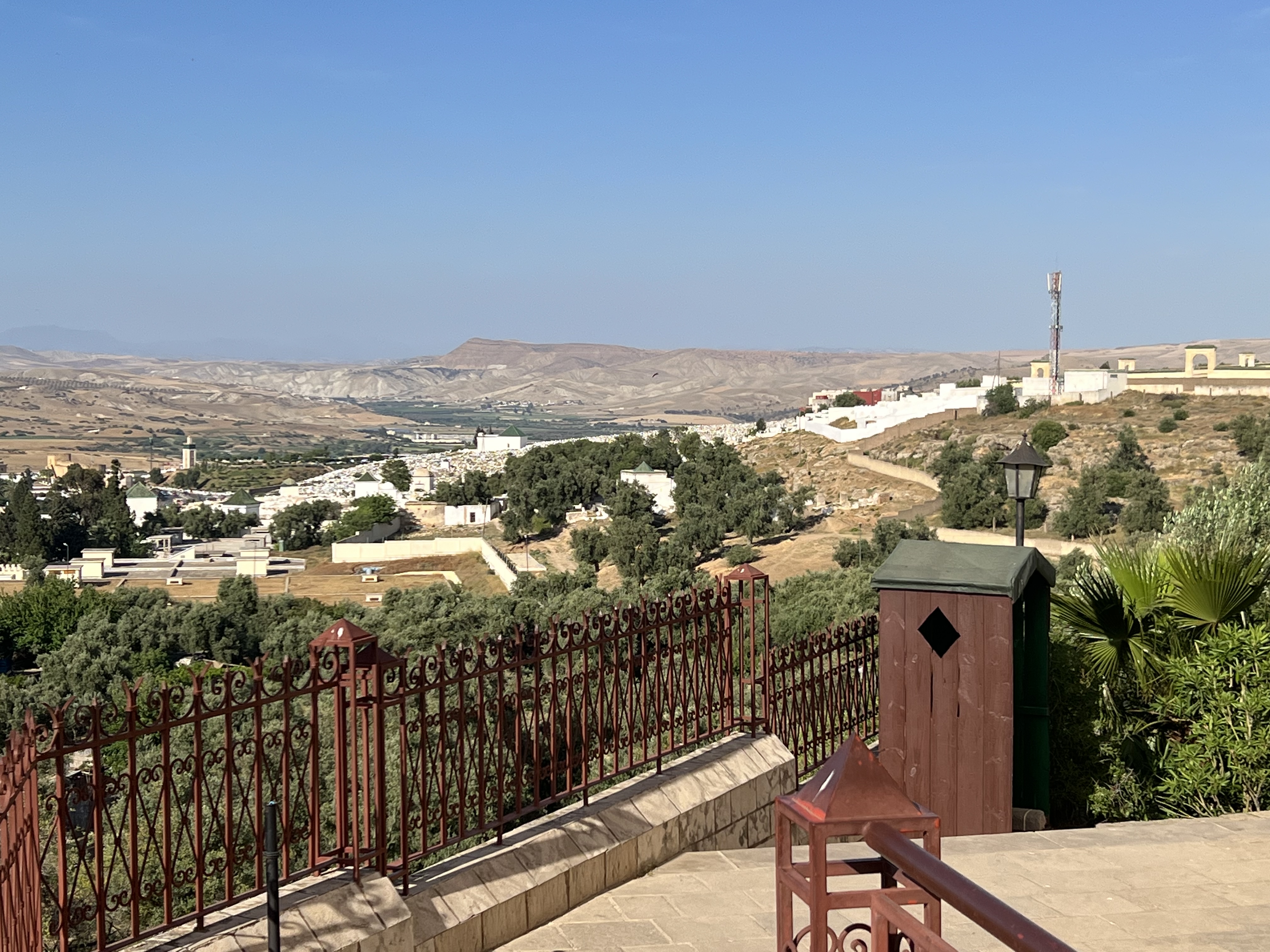
Art D’Argile
We visited Art D’Argile, a pottery and tile studio supported by the government to ensure traditional Moroccan crafts continue. Artisans pass their skills on to their children. The sixty-year-old old master craftsman in the picture below started interning at eleven..
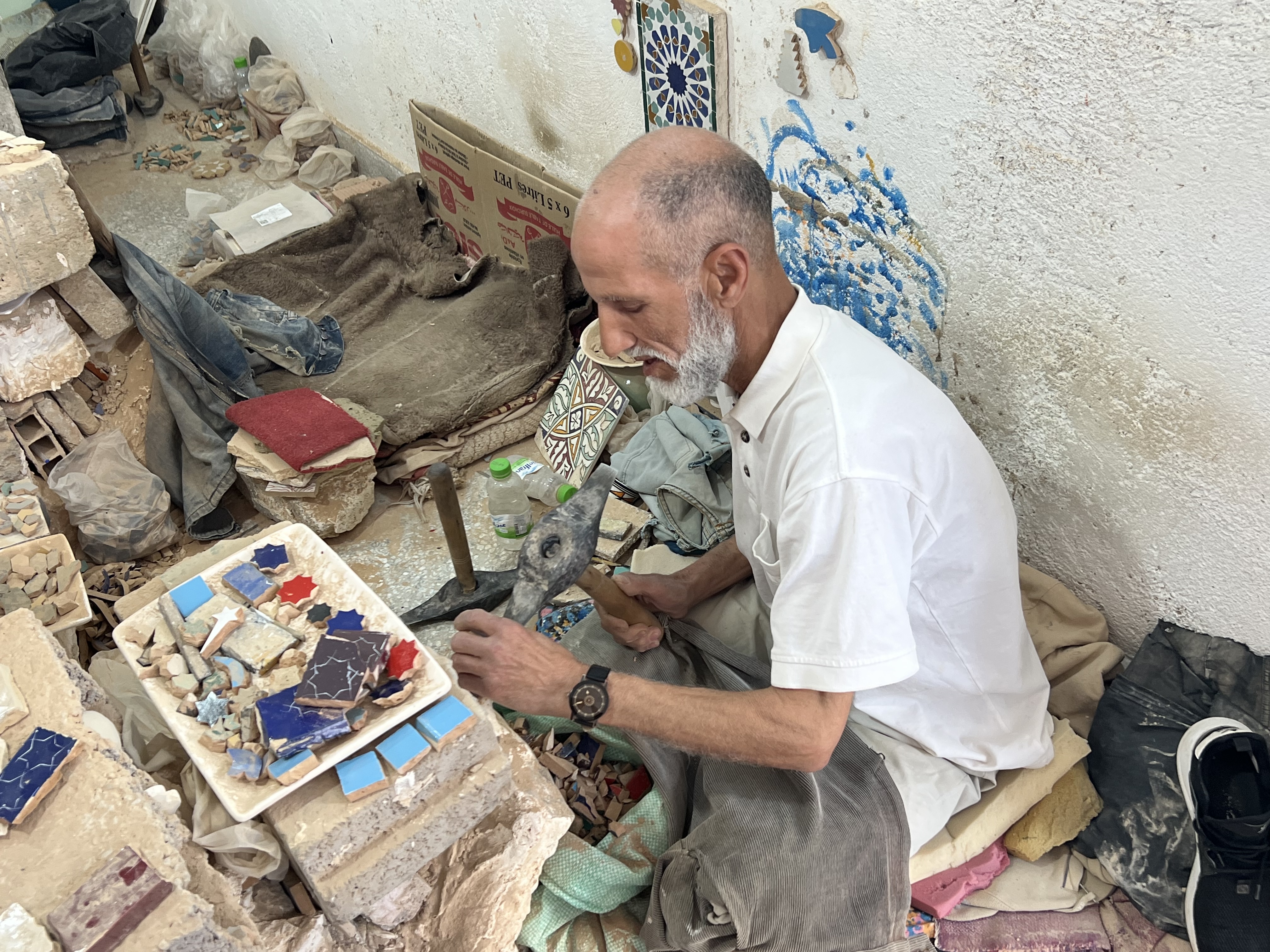
The master potter we observed had started as an apprentice at fourteen. Our tour guide chose me to try out the potter’s wheel and make a tagine, an earthenware pot used to cook a Moroccan dish of the same name. I told him the last time I tried pottery my bowl became a platter, but he assured me this time I would get lots of help. With the master potter guiding my hands and spinning the wheel we made a tagine together. I don’t think my tagine will make it to shop.
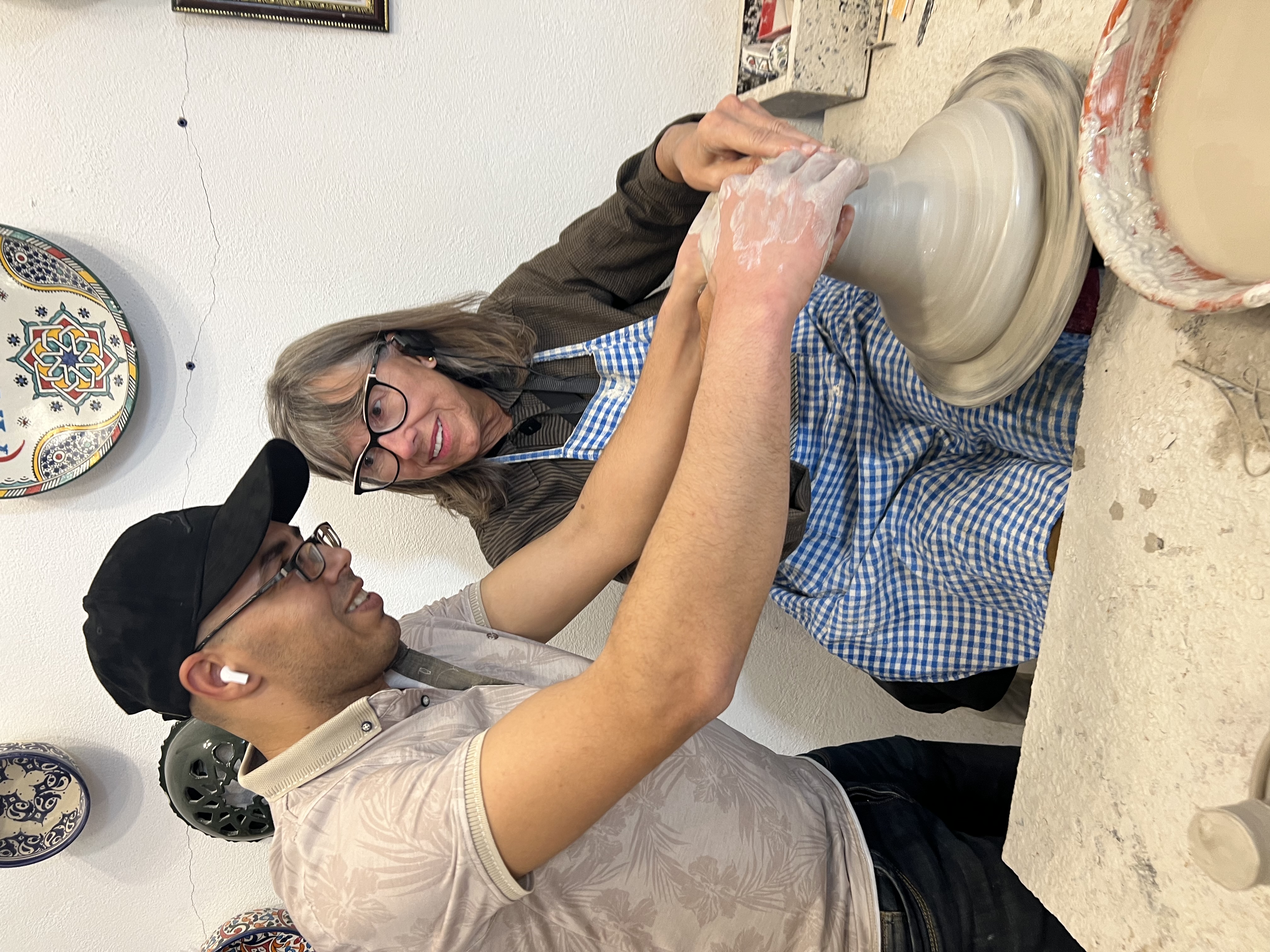
The government pays the art studio to house and train orphan girls. They live in a dormitory at the studio and become part of the studio family. I talked with one of the girls and she let me take her picture. She posed wearing her finest djellaba because she was going to an Eid al-Fitr celebration when the studio closed.
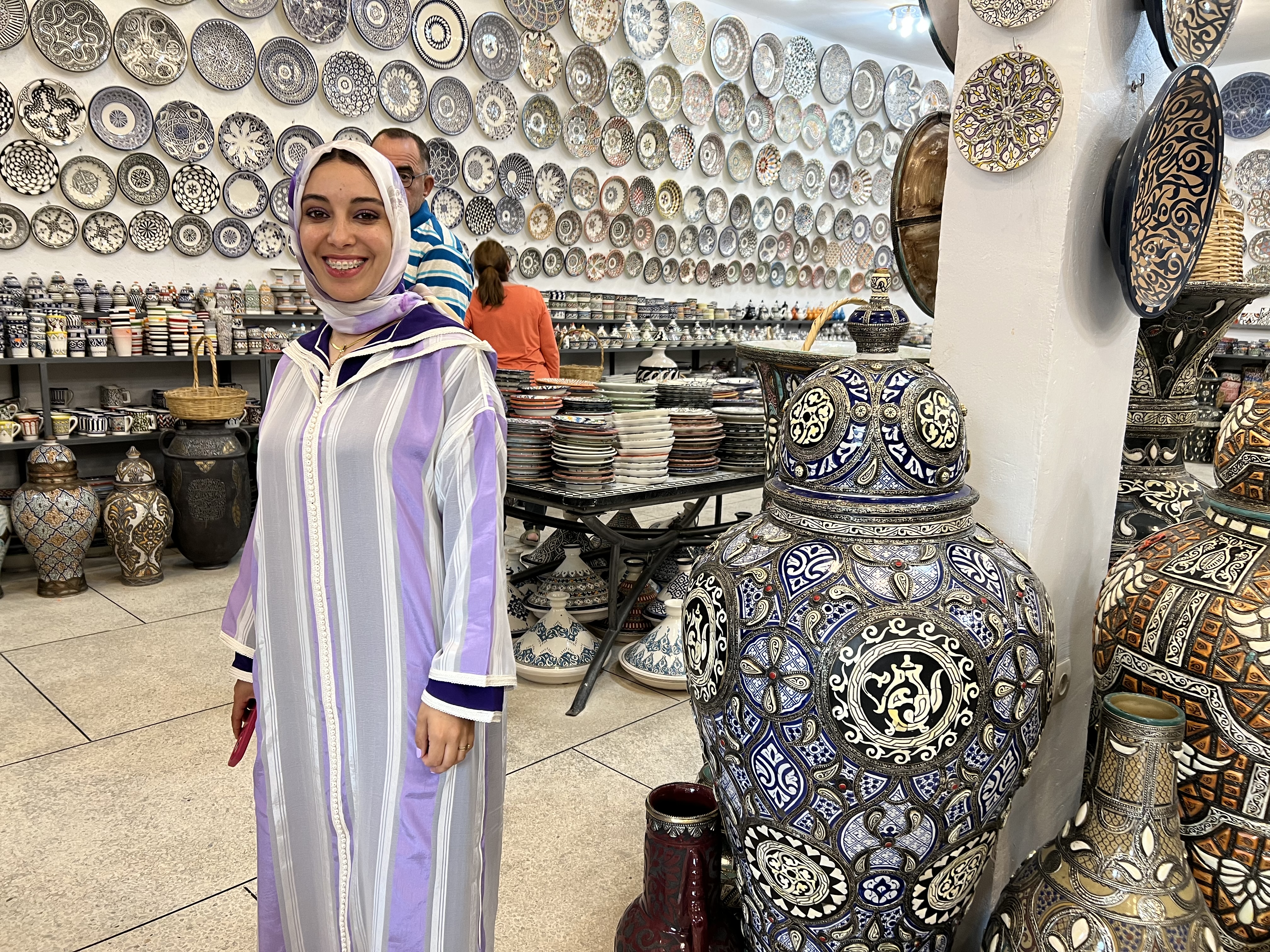
We ended the evening with a light dinner of lentil soup, dates and bread on the terrace of our riad.
